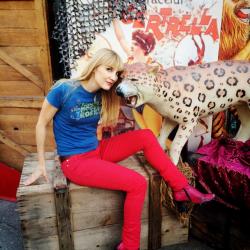In the early 1890s, as the 1st superintendent of the newly created Los Angeles Department of Parks stood on the water’s edge of Reservoir #4, a breeze apparently carried haunting reverberations of the voices of workers he hired to turn the water-filled ditch into a proper park. The lingering echoes supposedly inspired English immigrant Joseph Henry Tomlinson to choose the name of the new park he was creating. It would be fitfully called Echo Park Lake. Modeled after Shipley Park in Derbyshire, England where Tomlinson played as a boy, his design mimicked the English landscape “Picturesque Style,’ with a gentle meandering path tracing the water’s edge.
Originally a natural arroyo that filled with runoff from a stream on present day Baxter Street, it was dammed in 1868 to make a reservoir to power a woolen mill that was located on 6th and Figueroa. When the mill closed in 1875, Los Angeles still had less than 30,000 people. Twenty years later, when Echo Park Lake officially opened, the population had quadrupled to 130,000. Today Echo Park Lake is a dreamer’s paradise; a quaint respite from the bustling downtown skyline which can be seen in the distance. Its history is now the only thing that echoes through time. When the trees and landscaping were added nearly 110 years ago, the sound echoes ceased to exist. Instead, enchanted visions of the Keystone Cops and their madcap celluloid adventures whisper silently through the ages. The earliest movie studios were located just up Glendale Boulevard in an area once known as Edendale. By the late 19-teens Keystone Studios, who used the park in many silent comedies, was barred from filming in the park due to an excessive amount of trampled flower beds.
The recent renovation of Echo Park Lake has created quite a buzz around one of the very first parks to be built in the city of Los Angeles. After decades of decline, the park was designated a Cultural and Historic Landmark in 2006 and with renewed interest and an upswing in the neighborhood, it closed for two years to be given a complete overhaul. The lake has long been known for the lotus flowers which bloom yearly between April to August. These flowers first appeared in the lake in about 1923 or 1924 and acclimated quickly. Some say Chinese missionaries planted these flowers for food, while others credit Aimee Semple McPherson, the founder of Angelus Temple located across the street, for bringing them back from China and adding them to the lake herself. An annual Lotus Festival was started in 1977 and occurred each July with dragon boats races, even as the lotuses began to decline in 2005 due to lake conditions and were practically non-existent by 2008.
When the park reopened in June 2013 after a 45 million dollar makeover, it was clear that much forethought had gone into the engineering of the rehabilitation of the lake, while keeping it historically true to its original form. 900 acres of urban land in the neighborhood drains into Echo Park Lake and it was important to create a filtering system that cleaned the water and channeled it back into the lake to counter evaporation. Although the original lotuses had died off in the lake itself, landscape architect Josh Segal was able to track down lotuses that had been clipped from the original plants, preserving the historic integrity. Wetlands, including striped rush, giant arrowhead, hair grass and water lilies were introduced to help further filter the water as it comes out of the storm drains. The fish, which were so important to neighborhood fishermen, will be reintroduced by the California Department of Fish and Game, as soon as the plants are strong and flourishing. Netting covering the plants to protect them from birds will stay on another 1-2 years until the plants get established.
The magic of this historic park and lake includes a boathouse, built in 1932, which now houses Square One cafe and pedal boat rides. Renting a pedal boat and steering out to be splashed by the center fountain, which was added to the lake in 1986, is a delicious activity on a warm day. A visit to the guardian angel of the lake, a statue created in 1937, under a WPA commission by sculptor Ada May Sharpless called “Lady of the Lake” is an enchanting way to do some peaceful reflecting. Echo Park Lake is alluring and very special. We are extremely lucky to have such an amazing piece of history preserved for all to use and cherish.
Echo Park Lake: 751 Echo Park Ave, Los Angeles, CA 90026; (213) 847-0929. Pedal Boat Rides: www.echoparkpedalboats.com










Beautiful article about the lake and its history….enjoyed the read.
Pingback: Neighborhood Spotlight – Silverlake - Clever Little Madam®
Who was the family that owned the first paddle boats there? My family knew them years ago…
Pingback: DB 155: My 1st Dodgers Game & What Made It So Special! | Dream Big Podcast